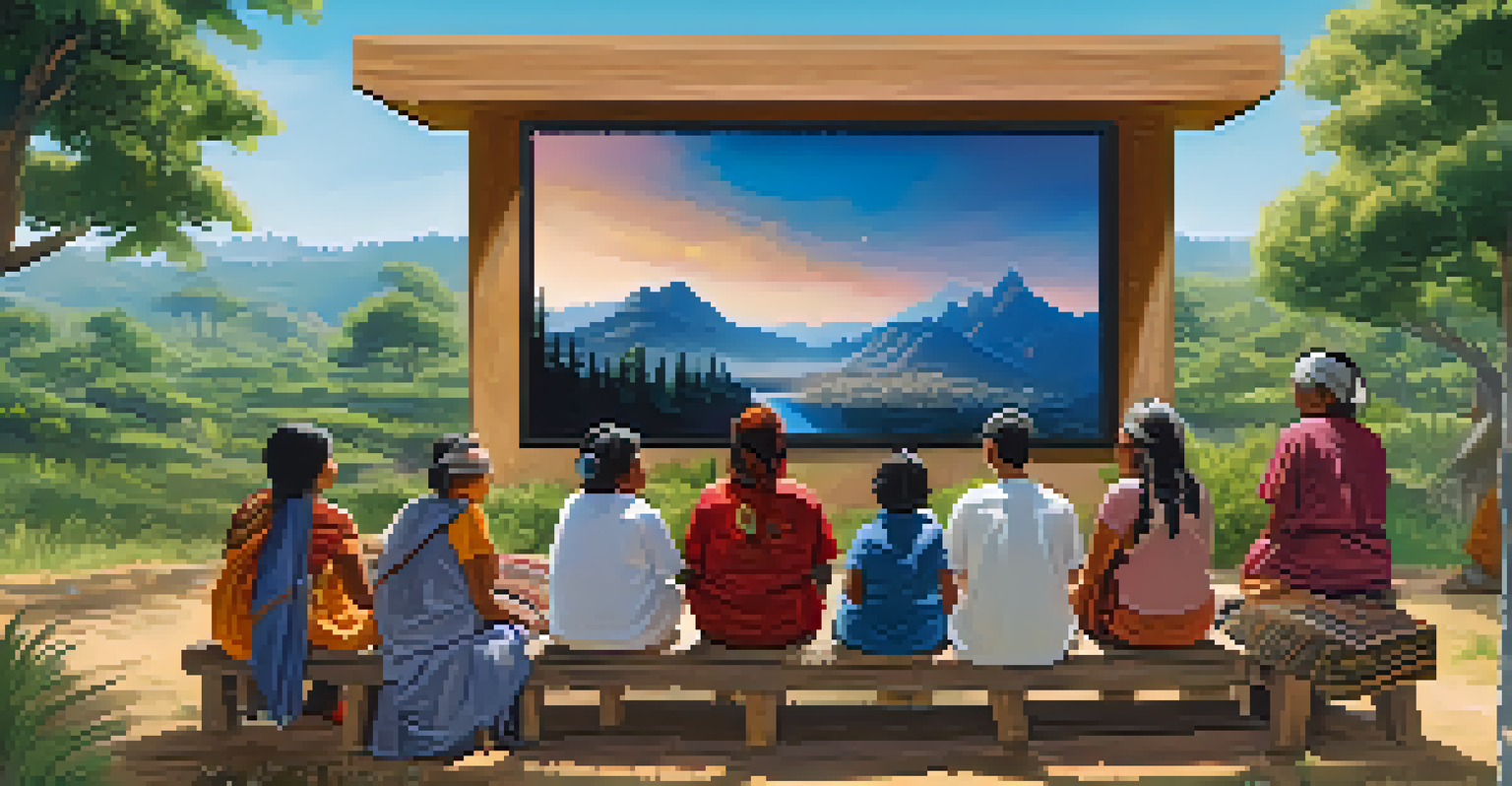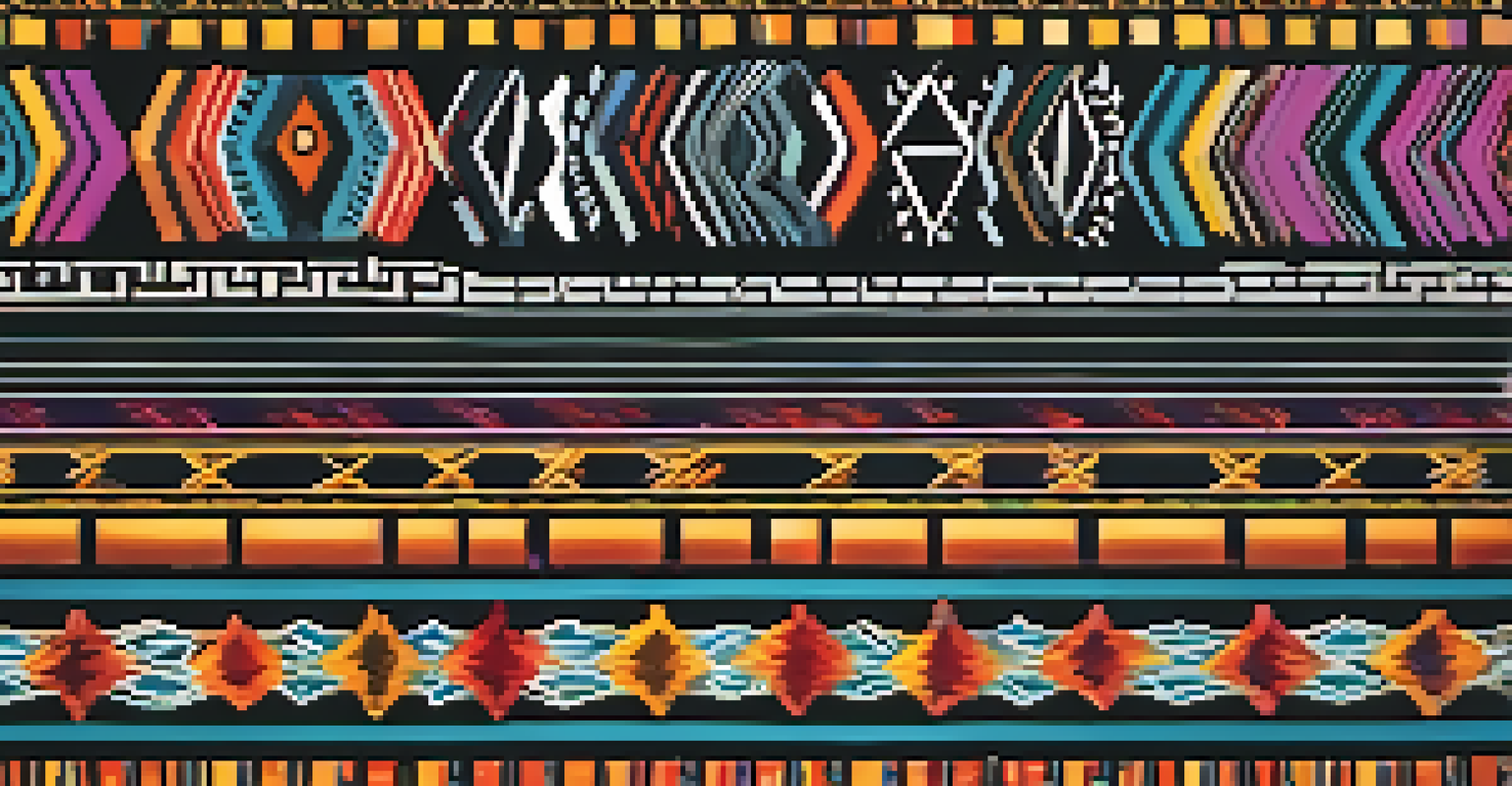How NFTs Can Protect Indigenous Cultural Heritage

Understanding NFTs and Their Functionality
Non-fungible tokens, or NFTs, are unique digital assets stored on a blockchain. Unlike cryptocurrencies, which are interchangeable, each NFT has distinct properties, making it one-of-a-kind. This uniqueness can be leveraged to represent cultural artifacts, artwork, or traditional knowledge of Indigenous peoples.
Art is a bridge between cultures, and through art, we can build understanding.
For example, consider a digital painting created by an Indigenous artist. By minting this artwork as an NFT, it becomes a verifiable digital asset that can be bought, sold, and owned. This ensures that the artist retains control over their work while providing a new revenue stream.
Moreover, NFTs allow for the creation of smart contracts, which can stipulate how proceeds from sales are shared with the community or the artist. This technology not only fosters economic empowerment but also elevates the voices of Indigenous creators in the digital space.
Preserving Indigenous Knowledge Through Digital Means
Indigenous cultures are rich with knowledge, traditions, and stories passed down through generations. However, much of this heritage faces threats from globalization and cultural appropriation. NFTs can serve as a modern tool to document and preserve this invaluable knowledge.

For instance, an Indigenous tribe could create NFTs that encapsulate their traditional stories, songs, or rituals. By securing this cultural heritage on the blockchain, they can control how it is shared and ensure that it is represented accurately and respectfully.
NFTs Empower Indigenous Artists
NFTs provide Indigenous artists a platform to sell their work directly, ensuring they maintain ownership and receive fair compensation.
This digital preservation not only safeguards these traditions but also educates the broader public about Indigenous cultures. By promoting awareness and understanding, NFTs can help combat stereotypes and foster respect for diverse cultural practices.
Empowering Indigenous Artists and Creators
The art world has historically marginalized Indigenous artists, often leading to the appropriation of their work without proper recognition or compensation. NFTs offer a transformative way for Indigenous creators to share their art while maintaining ownership and control.
The future of indigenous cultures depends on our ability to adapt and embrace new technologies while preserving our heritage.
By selling their artworks as NFTs, Indigenous artists can reach a global audience without relying on traditional galleries or auction houses. This democratization of art sales allows them to build their own brands and community connections.
Additionally, NFTs can include royalties, ensuring that artists earn a percentage every time their work is resold. This ongoing revenue stream is particularly beneficial for Indigenous artists, providing financial stability while promoting their cultural heritage.
Combating Cultural Appropriation with NFTs
Cultural appropriation occurs when elements of one culture are taken by another, often without understanding or respect for their significance. NFTs can play a crucial role in combating this issue by providing a means for Indigenous communities to assert ownership over their cultural expressions.
For example, if a piece of Indigenous art is turned into an NFT, it clearly identifies the creator and the cultural context behind it. This transparency helps prevent unauthorized use and encourages respect for the original culture.
Preserving Cultural Heritage Digitally
Through NFTs, Indigenous communities can document and protect their traditions, stories, and knowledge from cultural appropriation.
Furthermore, by promoting Indigenous-led NFT projects, consumers can support ethical practices and engage with these cultures in a more meaningful way. This shift can help dismantle harmful stereotypes and foster genuine appreciation for Indigenous heritage.
Creating Community Engagement through NFTs
NFTs can serve as a catalyst for community engagement among Indigenous peoples. By involving community members in the creation and sale of NFTs, these projects can enhance collective identity and pride in cultural heritage. This participatory approach not only empowers individuals but strengthens community bonds.
For instance, a community might collaborate to create an NFT collection that showcases their collective art, stories, and traditions. Each member can contribute, ensuring a diverse representation of their cultural heritage.
This collaborative spirit fosters a sense of ownership and responsibility towards preserving their culture for future generations. It also helps younger members connect with their heritage in a contemporary context, ensuring that these traditions continue to thrive.
Building Economic Opportunities for Indigenous Communities
Economic empowerment is crucial for many Indigenous communities, and NFTs can provide new avenues for income generation. By tapping into the growing digital market, Indigenous peoples can create sustainable business models that align with their cultural values.
Consider an Indigenous community that decides to create a series of NFTs based on traditional crafts. By marketing these digital collectibles globally, they can attract buyers interested in unique cultural expressions, which in turn supports local artisans.
Economic Opportunities via NFTs
NFTs offer Indigenous communities new revenue streams, allowing them to create sustainable business models that reflect their cultural values.
This economic boost can lead to improved community infrastructure, education, and resources. Ultimately, NFTs can help Indigenous communities reclaim economic agency while promoting their cultural heritage on a global stage.
Challenges and Considerations in NFT Adoption
While the benefits of NFTs are promising, there are challenges and considerations that Indigenous communities must navigate. The digital landscape can be complex, and understanding blockchain technology may require additional resources and education.
Moreover, issues surrounding environmental sustainability related to blockchain technology should be addressed. Some NFT platforms have been criticized for their energy consumption, leading to concerns about the ecological impact of minting NFTs.

Indigenous communities must weigh these factors carefully, ensuring that NFT adoption aligns with their values and long-term goals. Engaging in discussions about ethical practices and sustainable technologies is essential for navigating this new digital frontier.